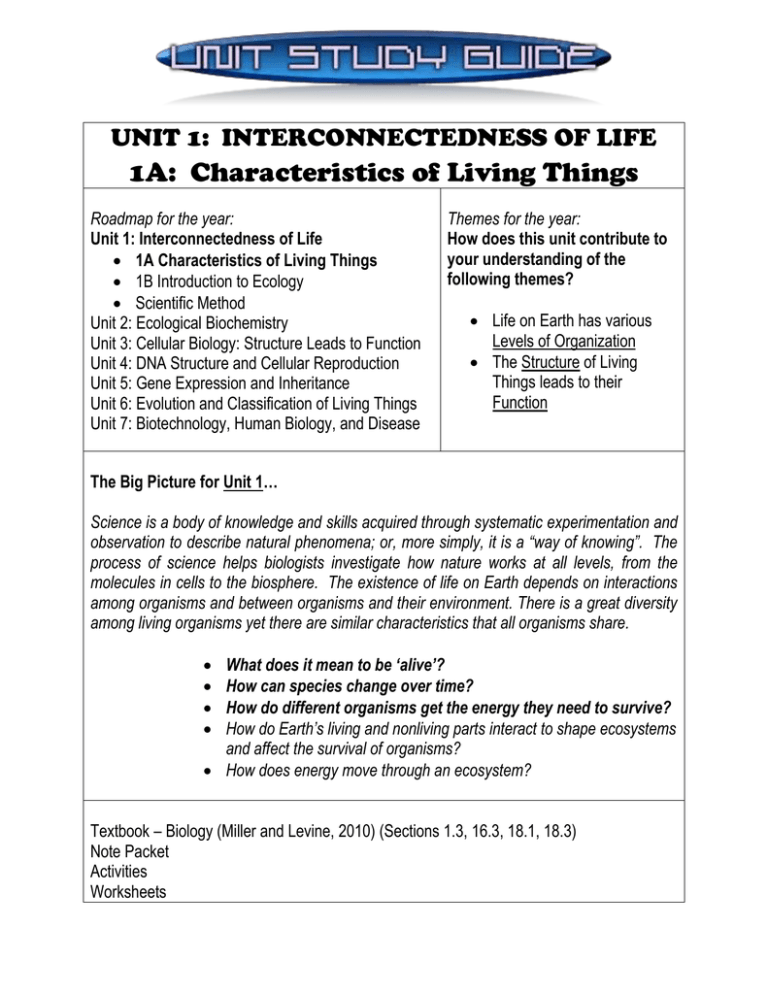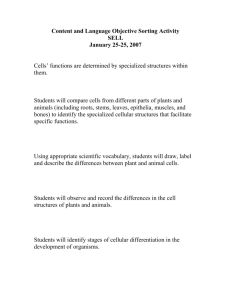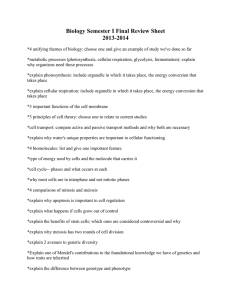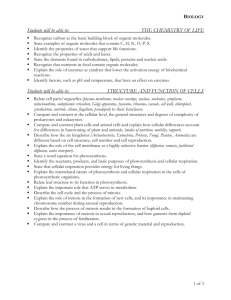Unit 1
advertisement

UNIT 1: INTERCONNECTEDNESS OF LIFE 1A: Characteristics of Living Things Roadmap for the year: Unit 1: Interconnectedness of Life 1A Characteristics of Living Things 1B Introduction to Ecology Scientific Method Unit 2: Ecological Biochemistry Unit 3: Cellular Biology: Structure Leads to Function Unit 4: DNA Structure and Cellular Reproduction Unit 5: Gene Expression and Inheritance Unit 6: Evolution and Classification of Living Things Unit 7: Biotechnology, Human Biology, and Disease Themes for the year: How does this unit contribute to your understanding of the following themes? Life on Earth has various Levels of Organization The Structure of Living Things leads to their Function The Big Picture for Unit 1… Science is a body of knowledge and skills acquired through systematic experimentation and observation to describe natural phenomena; or, more simply, it is a “way of knowing”. The process of science helps biologists investigate how nature works at all levels, from the molecules in cells to the biosphere. The existence of life on Earth depends on interactions among organisms and between organisms and their environment. There is a great diversity among living organisms yet there are similar characteristics that all organisms share. What does it mean to be ‘alive’? How can species change over time? How do different organisms get the energy they need to survive? How do Earth’s living and nonliving parts interact to shape ecosystems and affect the survival of organisms? How does energy move through an ecosystem? Textbook – Biology (Miller and Levine, 2010) (Sections 1.3, 16.3, 18.1, 18.3) Note Packet Activities Worksheets Directions: Below are check lists of things you should know and things you should be able to do by the end of the unit. Use this tool to help you prepare for the unit assessment. By the conclusion of this unit, you should know the following: 1) Biology is the study of living things. 2) All living things exhibit the following eight characteristics: made of cells, utilize a universal genetic code, obtain and use materials and energy, grow and develop, reproduce, respond to their environment, maintain a stable internal environment, and change over time. 3) Natural selection is a mechanism for evolution involving descent with modification. 4) Viruses are considered non-living because they do not exhibit all of the characteristics of living things. By the conclusion of this unit, you should be able to do the following: 1) Explain the characteristics of living things and use them to justify whether or not something is ‘alive’. a. Identify the cell as the basic unit of structure and function in living things. Distinguish between examples of unicellular and multicellular organisms. Explain the importance of cellular specialization in a multicellular organism b. Give general examples of life processes which verify the existence of metabolic activity. Compare and contrast alternate ways organisms obtain energy from their environment to undergo metabolic activities (autotrophs vs. heterotrophs). Realize that all organisms undergo cellular respiration and some also perform photosynthesis. Explain the interdependence of photosynthesis and cellular respiration c. Describe how growth differs from development. d. Differentiate between sexual and asexual reproduction as different methods of producing offspring. e. Give example(s) of how an organism might respond to internal/external stimuli to maintain homeostasis. f. Provide an example of how a mutation can lead to the adaptation and evolution of a species. g. Explain why viruses do not fit the definition of a living thing. Characteristics of Living Things Key Terms Words found in the textbook: 1) Biology : 2) Metabolism : 3) Autotroph : 4) Heterotroph : 5) Photosynthesis : 6) Cellular Respiration : 7) Asexual Reproduction : 8) Sexual Reproduction : 9) Homeostasis : 10) Stimulus : 11) Prokaryotes: 12) Eukaryotes: 13) Response : 14) Species : 15) Adaptation : 16) Mutation : 17) Evolution : 18) Natural Selection : 19) Traits : 20) Binomial Nomenclature : Words NOT found in the textbook (use your note packet- you may have to generate a definition in your own words- give it a try!!) 21) Organism : 22) Offspring : 23) Unicellular : 24) Multicellular : 25) Cellular Specialization: 26) ATP : 27) Growth : 28) Development : 29) Variations : 30) Life Span : 31) Taxonomy : 32) KPCOFGS :








